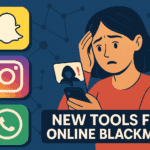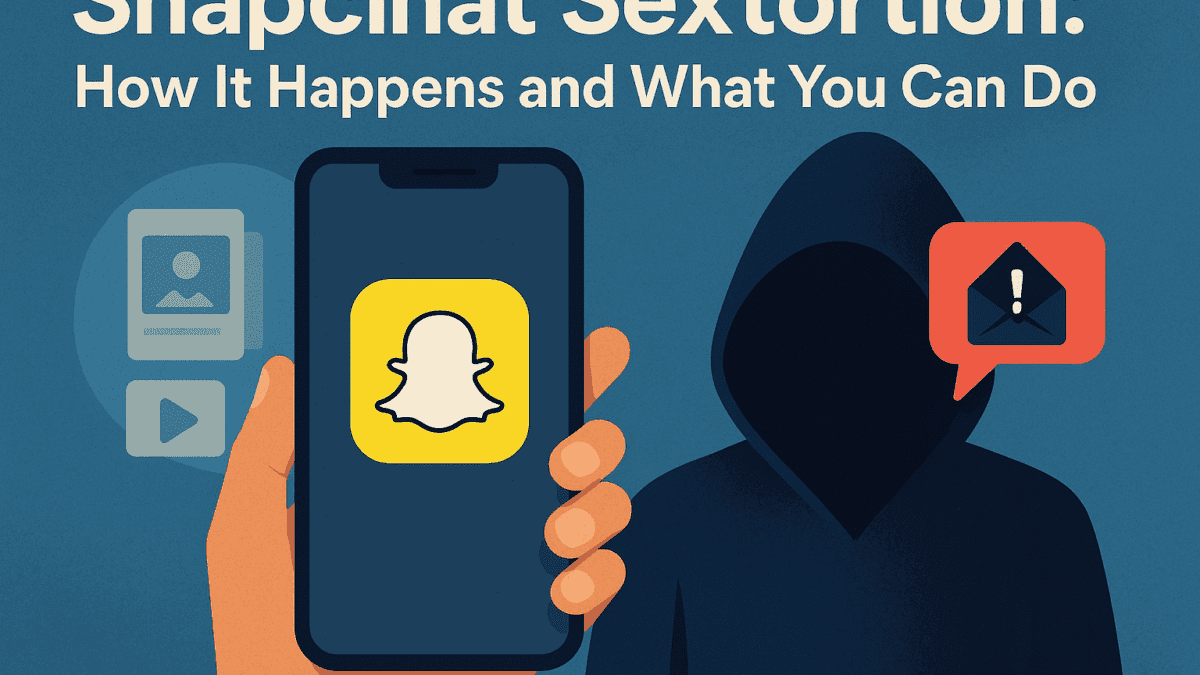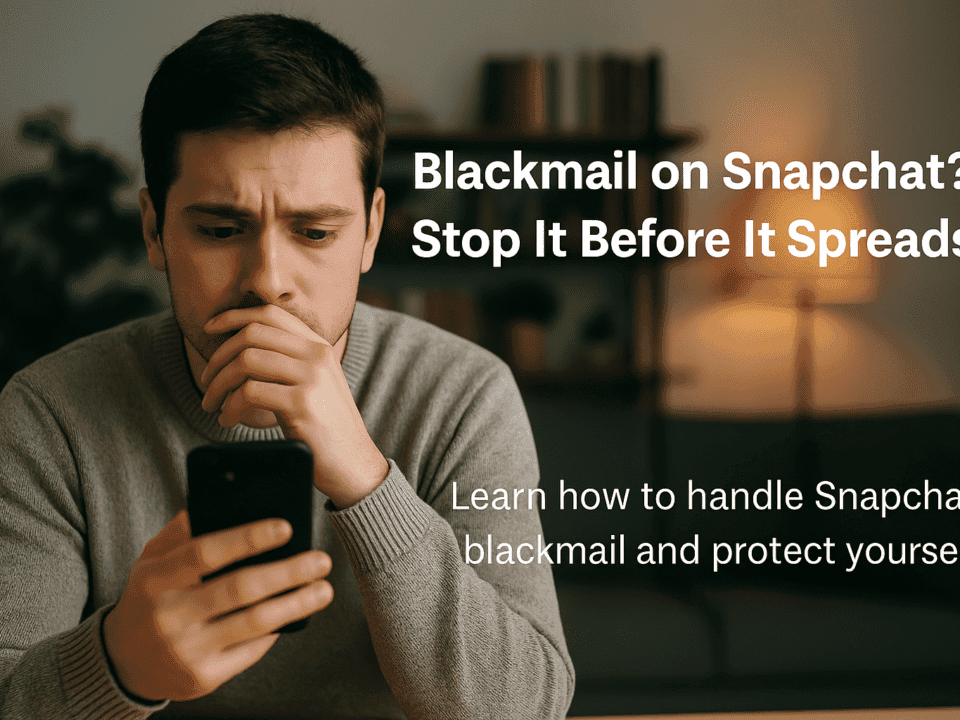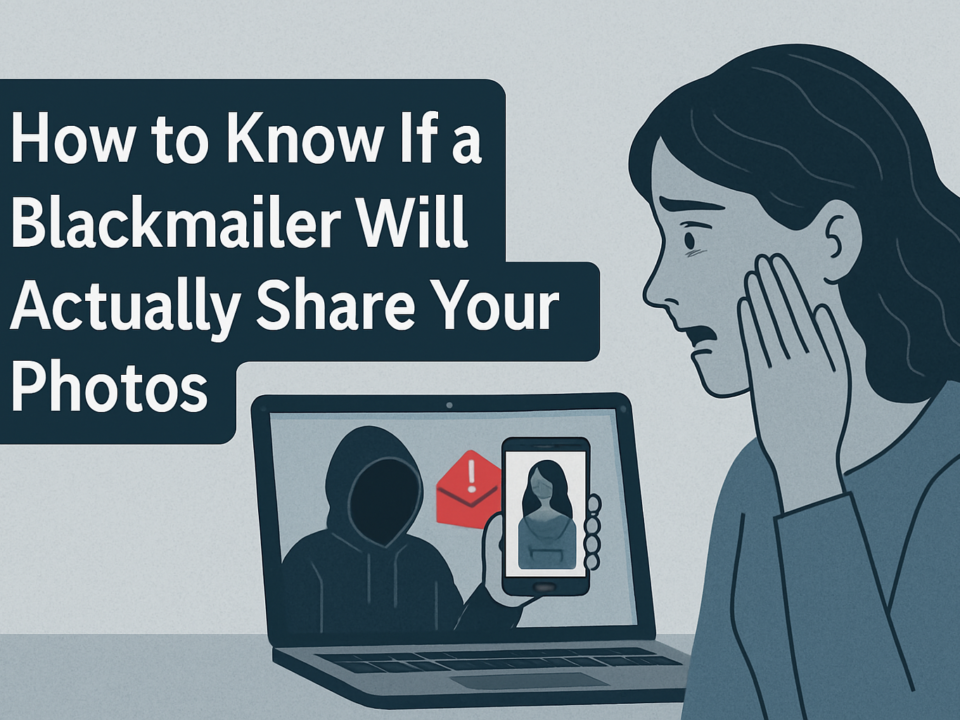
Understanding Sextortion: How to Recognize, Prevent, and Stop It
May 25, 2025
How Blackmailers Use Snapchat, Instagram, and WhatsApp to Target Victims
May 26, 2025You’re scrolling through Snapchat, replying to stories, and maybe chatting with someone new — and then, out of nowhere, the ground drops beneath you.
A message. A screenshot. A threat.
"If you don’t send more, I’ll share this with your friends."
If you’re reading this because something like that just happened — pause. Breathe. You’re not alone, and this page is here to help you understand what’s going on, how these scams typically unfold, and what your next steps can be.
The Rise of Sextortion on Snapchat
Snapchat was designed to be fun, fleeting, and private — which is exactly why it’s become a favorite platform for scammers. They know messages disappear. They know teens and young adults trust it more than other apps. And they exploit that trust.
Here’s how it often starts:
Someone you don’t know adds you. They might seem attractive. Flirty. Harmless.
They start a conversation — quickly turning it personal, even sexual. Before long, they might send a revealing photo and ask for one in return.
The moment you reply? The tone changes.
"We screenshotted your image. Pay us or we’ll send it to everyone in your contacts."
It’s terrifying. And it’s engineered to make you act fast, without thinking.
Real Cases, Real Fear
"A 17-year-old from Manchester thought he was chatting with someone his age. He sent one snap. Within minutes, the blackmailer had a screenshot, threatened to send it to his school friends, and demanded money."
"A 22-year-old in New York was asked to FaceTime. She did. They recorded it, threatened her with exposure, and gave her 30 minutes to pay — or else."
This isn’t rare. Snapchat sextortion has become a global problem, and scammers are getting bolder.
Why Snapchat?
Temporary Messages = False Security: Victims often believe snaps can’t be saved — but scammers use screen recorders or third-party apps.
Younger Demographic: Teens and young adults are less likely to report and more likely to panic.
Contact Integration: Scammers threaten to expose victims to their saved friends list.
Snapchat’s design makes it easy to be fooled — and hard to prove what happened.
What You Shouldn’t Do
Don’t panic-send money. Paying once doesn’t make them go away.
Don’t engage further. Every message confirms they’ve got your attention.
Don’t delete your account yet. Evidence can help — and deleting can break potential recovery steps.
What You Can Do Next
We won’t share every technical method here — not because we can’t, but because it’s often misused and misunderstood. But here’s what matters:
Block and Report: Stop contact immediately. Block them on Snapchat and any other platform.
Preserve Evidence: Save messages, screenshots, usernames. Even if snaps disappear, logs can help.
Secure Your Accounts: Change passwords and enable 2FA across your email and social platforms.
Stay Calm: Scammers rely on panic. Every moment you wait, they lose leverage.
If you’re unsure what to do next, discreet help exists. We’ve supported many victims in similar situations — and the earlier you reach out, the more options you have.
Why This Blog Doesn’t Show You Every Step
Sextortion isn’t just a digital nuisance — it’s run by organized networks. Cartels. Syndicates. Even if the threat feels personal, it often isn’t. That’s why handling it solo or following advice from strangers online can make things worse.
At Blackmail Shield, we use secure, private methods to disrupt scammers — without giving them more power.
Want to understand more about how professional removal works? Learn more about our blackmail disruption services.
Final Thoughts
If this has happened to you, don’t blame yourself.
These scams are designed to manipulate. To isolate. To shame.
But you are not powerless.
This moment doesn’t define you — how you respond next does.




